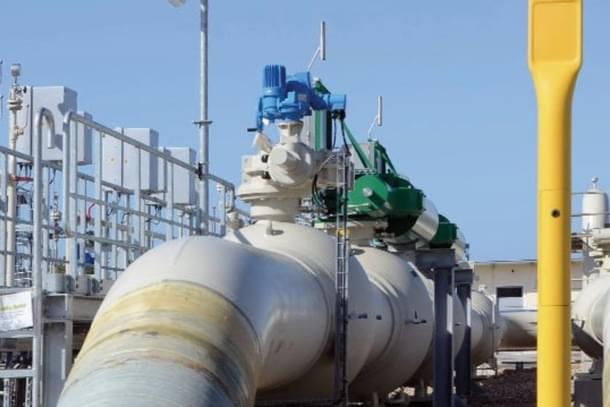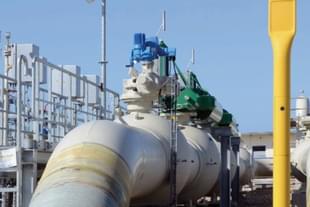Business
Explained: Europe's Energy Crisis In The Wake Of Russia-Ukraine War
Swarajya Staff
Jun 23, 2022, 03:59 PM | Updated 06:01 PM IST
Save & read from anywhere!
Bookmark stories for easy access on any device or the Swarajya app.


Amid the ongoing Russia-Ukraine war, European nations are facing an energy crisis as the oil and gas supply has been dwindling in the continent due to various factors.
Further, Crude oil and gas prices have been soaring across the globe in the last year due to rising demand and low production. However, Europe has been particularly hit as the continent largely depends on imported oil and gas for its fuel needs.
Europe's dependence on Russian energy supplies
The European countries are to a large extent dependent on Russia for energy supplies, with Russian gas flows to Europe, prior to the invasion, making up as much as 40 per cent of all of its supplies.
Gas prices in Europe have soared in the last year after Russia squeezed supplies ahead of the invasion and as fears of supply disruptions grew, stoking inflation and a cost of living crisis for many countries in the continent.
However, after the Russian invasion of Ukraine in February this year, Europe is trying to reduce its reliance on Russian gas.
Russia is also one of the prominent suppliers of crude oil to the European countries.
At 258,000 barrels per day, Russia makes up for 21 per cent of Turkey’s oil imports. For Portugal, it is 31,000 barrels per day (bpd) at 10 per cent. For Czech Republic, it is 52,000 bpd at 21 per cent. For Hungary, 92,000 bpd at 43 per cent. For Austria, 8000 bpd at 3 per cent. For Poland, 509,000 bpd at 58 per cent. For Estonia, 13,000 bpd at 34 per cent. For Ireland, 11,000 bpd at 6 per cent. For Latvia, 9,000 bpd at 24 per cent. For Lithuania, 185,000 bpd at 83 per cent. For Finland, 246,000 bpd at 80 per cent.
The list goes on. For Norway, at 45,000 bpd, Russia makes up for 25 per cent of the oil imports. For Spain, it is 183,000 bpd at 11 per cent. For Italy, 204,000 bpd at 13 per cent. For Belgium, 278,000 bpd at 23 per cent. For Germany, 835,000 bpd at 30 per cent. For Slovakia, 109,000 bpd at 74 per cent. For Greece, 200,000 bpd at 29 per cent. For Netherlands, 748,000 bpd at 23 per cent. For Sweden, 43,000 bpd at 9 per cent. For the French, 233,000 bpd at 13 per cent. For Denmark, 28,000 bpd at 15 per cent, and finally, for the United Kingdom, the closest ally of the Americans in Europe, at 170,000 bpd, Russian crude imports have a share of 11 per cent.
Together, these 23 countries (data for four European states was unavailable), import close to 4.49 million barrels of oil, each day, from Russia.
Twin threats to European gas imports
In a double blow to European gas supplies, a major US liquefied natural gas export terminal said it would be offline for at least three months and Russia said it would cut flows through a key route to Germany.
Freeport LNG, a major American gas supplier which accounts for about 10 per cent of Europe's imports this year, had earlier on Tuesday (21 June) said that repairs following an explosion at its plant last week could take until the end of the year, with only partial activity set to resume after 90 days.
With the majority of exports of the terminal heading to the EU and UK, news of the fire and subsequent closure prompted European gas prices at the time to spike by as much as 20 per cent.
Meanwhile, Russia has said it would cut capacity on the Nord Stream 1 pipeline to Germany by about 40 per cent, blaming the reduction on the delayed return of a key piece of technical equipment that Siemens Energy said has been blocked by Canadian sanctions against Moscow.
IAEA urges Europe to lower Russian gas exports
Following Russia's decision to cut gas supply to Europe, the International Energy Agency (IEA) has warned that European countries must prepare immediately for the complete severance of Russian gas exports this winter.
The agency has urged governments in Europe to take measures to cut demand and keep ageing nuclear power stations open.
IEA head Fatih Birol has said that Moscow's decision to cut gas supplies to Europe may be a precursor to further cuts as Moscow looks to gain "leverage" during its war with Ukraine.
Lack of adequate refining capacity
Another factor that has contributed to the soaring fuel costs in Europe as well as across the globe is the lack of adequate refining capacity to process crude into gasoline and diesel to meet high global demand.
There is enough capacity globally to refine about 100 million barrels of oil a day, according to the International Energy Agency. However, around 20 per cent of this capacity, mostly in Latin American country, is not useable due to lack of investment.
In April, 78 million barrels were processed daily globally, down sharply from the pre-pandemic average of 82.1 million bpd, reports Reuters.
The IEA expects refining to rebound during the summer to 81.9 million bpd as Chinese refiners come back online.
The United States, China, Russia and Europe are all operating refineries at lower capacity than before the pandemic.
In Europe, refineries are constrained by high prices for natural gas, which powers their operations.
Further, the cost to carry products on vessels overseas has risen due to high global demand, as well as sanctions on Russian vessels.
Also Read: India’s Neutrality, Russia’s Energy, And America’s Hypocrisy





